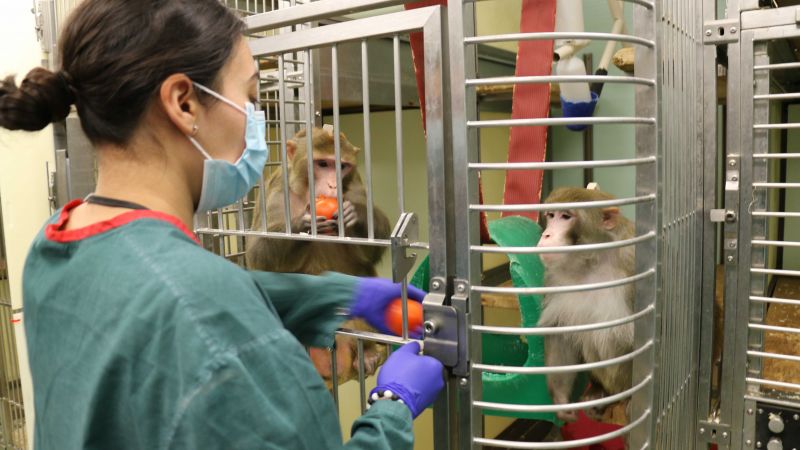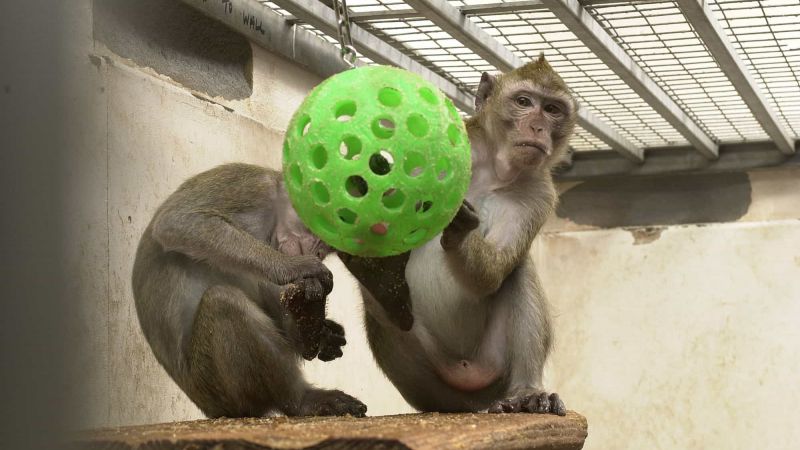
To study the brain we need monkeys
While most animal research involves the use of rodents, fish and rats, around 0.1% of the research animals in the UK are non-human primates (monkeys). And although the 3Rs and the European Directive 2010/63 both agree that animal models should be replaced when possible, non-human primates remain a vital model for studying many diseases and conditions, especially of the brain.
Non-human primates provide unique perspectives on the study of human physiology and disease. They may look different and act differently, but their biology is similar in many ways to humans as they share over 90% of their DNA with us.
Monkeys offer unique opportunities to peer into how humans work, especially when it comes to the brain. Professor Christopher Petkov and his team have been working for many years with human and non-human primates to study the brain and the neuronal mechanisms and neural systems for perception, cognition and communication.
The team studies the brain to understand how it can support cognitive abilities such as language, quite unique to the human species. Their studies could tell us how language came about, what specialisation happened in the human brain to facilitate the event and also identify the regions and the mechanisms involved. Many human diseases can impact speech, communicating skills and learning capacities of patients, such as stroke, brain degeneration caused by dementia or even seizures. Knowledge gained from this research could help create therapies for people suffering brain damage or disease.
“We use non-human primates for our work because there are a number of questions that can’t be addressed only in humans. The monkeys are indispensable and vital for our studies, but our work stays linked, as directly as possible, to patients,” explains Dr Petkov.
The team also works side by side with neurosurgeons in the US to understand the impact of brain surgery undergone to repair brain damage caused by epileptic seizures in patients, and the impact of electrodes implanted to record brain activity. “We conduct the same imaging studies in the humans that we do in monkeys.”
The research uses advanced imaging and neurophysiological methods.The monkeys are gradually trained up to be scanned in MRIs, in the same way humans would be. The training is vital to reduce the stress for both monkeys and humans.
“Our human patients can also be distressed the first time they get into the scanner because it is noisy and very cramped inside. We have a pretend scanner that we use to get them used to the machine. They really benefit from the experience. Before we had this, people would stop in the middle of the scan, even though we verbally described what they would experience. We can’t verbally describe the experience to the monkeys to calm them, but we can take them step by step, very gradually through the process of what it is like. Depending on the animal, we usually go through 3 to 6 months of habituation and simulation. We try to simulate two of the more distressful things about being scanned with MRI: the noise and the confinement.”
The monkeys’ well-being is a huge part of Christopher Petkov’s work. He has worked with a number of projects with the NC3Rs. For instance, he developed a non-invasive way to immobilise the head of the monkeys in the MRI, that didn’t involve a surgical implant. The face mask and helmet used instead were directly inspired from a collaboration with a human cancer radiotherapy study that used these custom helmets to treat patients with head and neck cancer. The same plastic is also used to form caps on top of the heads of the monkeys to help with post-surgical incomes for animals that still require the implants.
“And there are many more examples in our lab of animal welfare improvements. There is always something that we can think about that could be a lot better,”adds the researcher.
The use of these animals in research must be carefully considered and conducted in a controlled and thoughtful manner according to the scientist.
“We become very close with the monkeys and vice versa. They are part of the lab. It is always difficult to part with these wonderful animals. In the past, we successfully managed to retire a couple of marmosets to a specialised facility and we are now negotiating with our home office so that more animals benefit from a retirement.”
Macaques are also trained to work in an MRI at the primates unit at Oxford University. You can see the process in this film from our 360 labour: http://labanimaltour.org/oxford
Last edited: 29 July 2022 10:12



